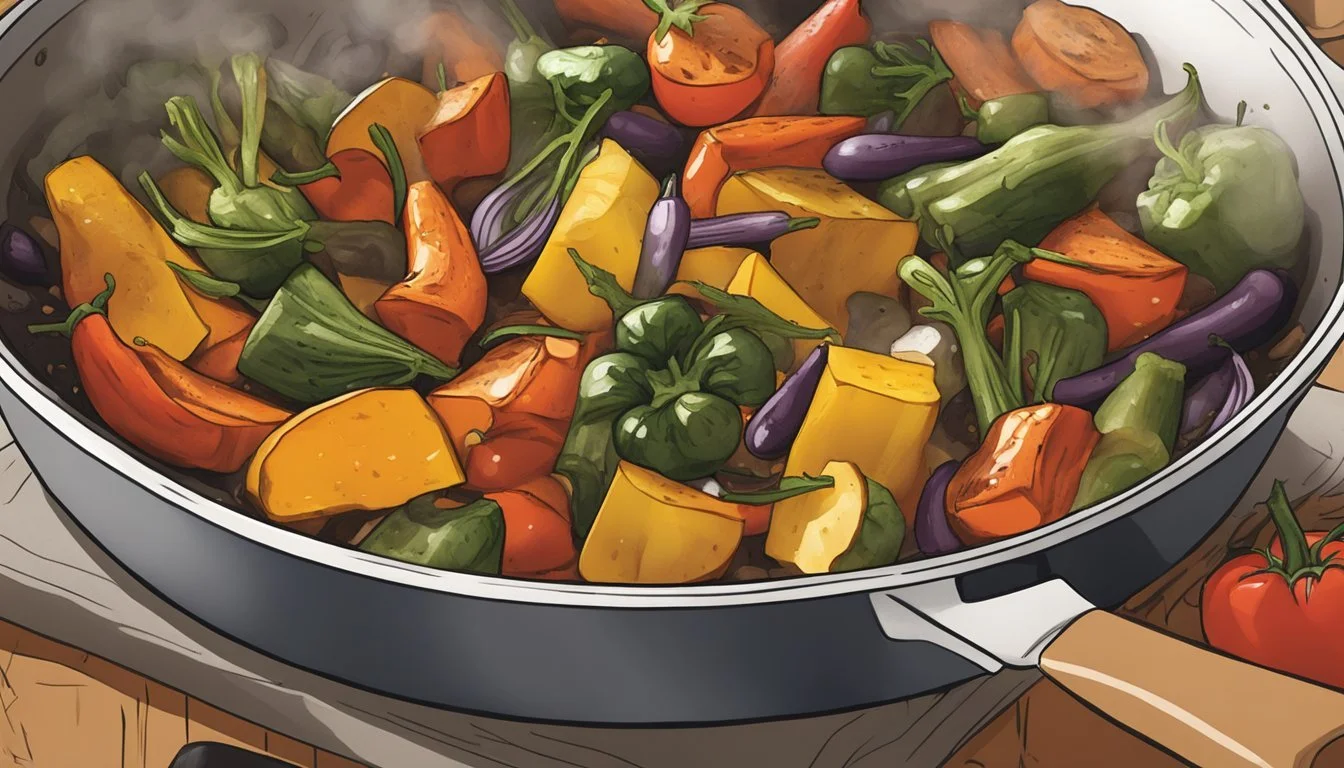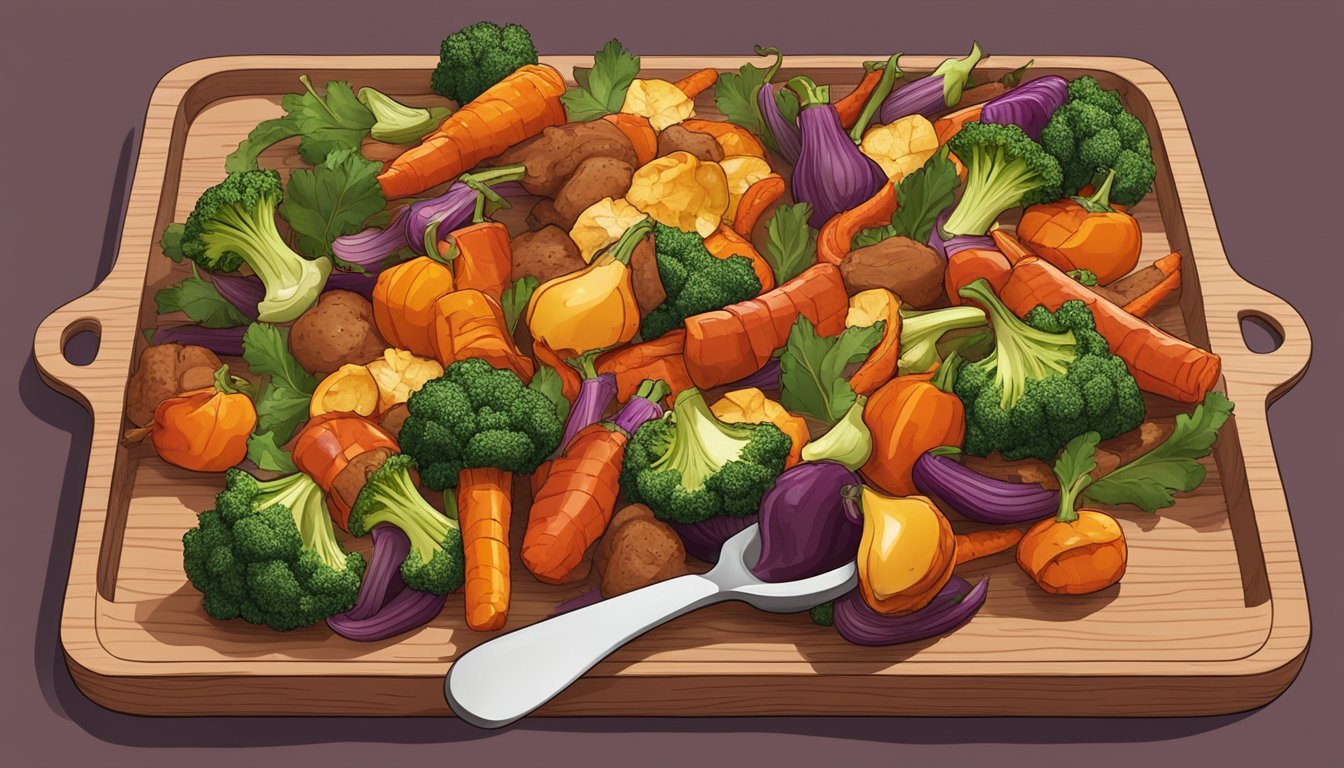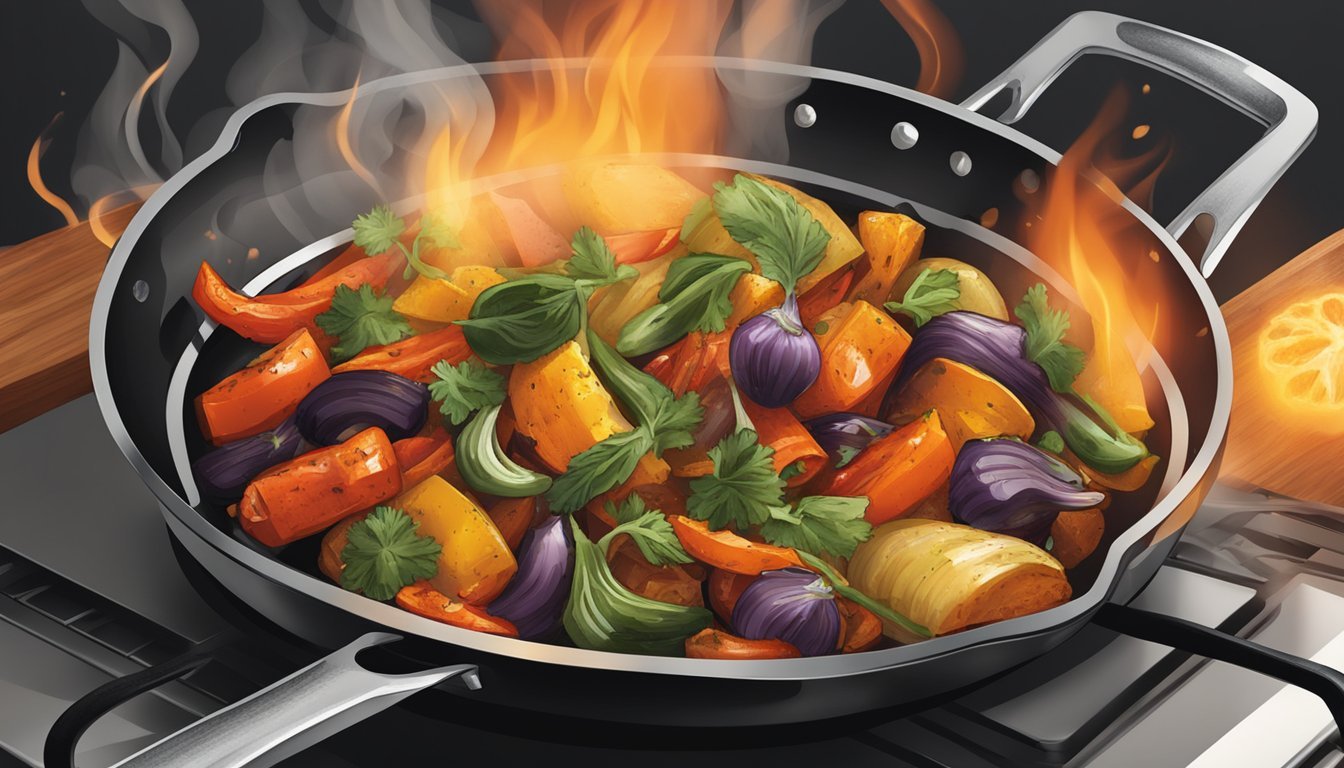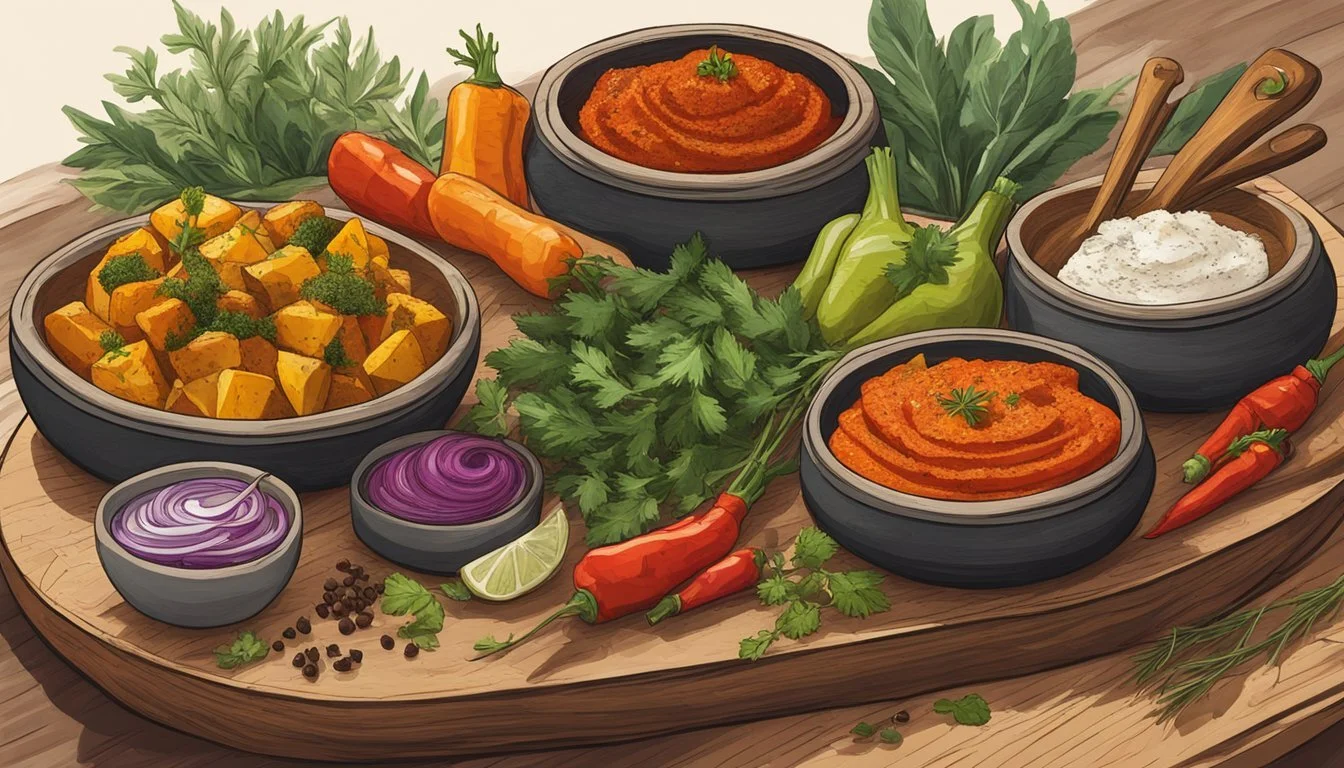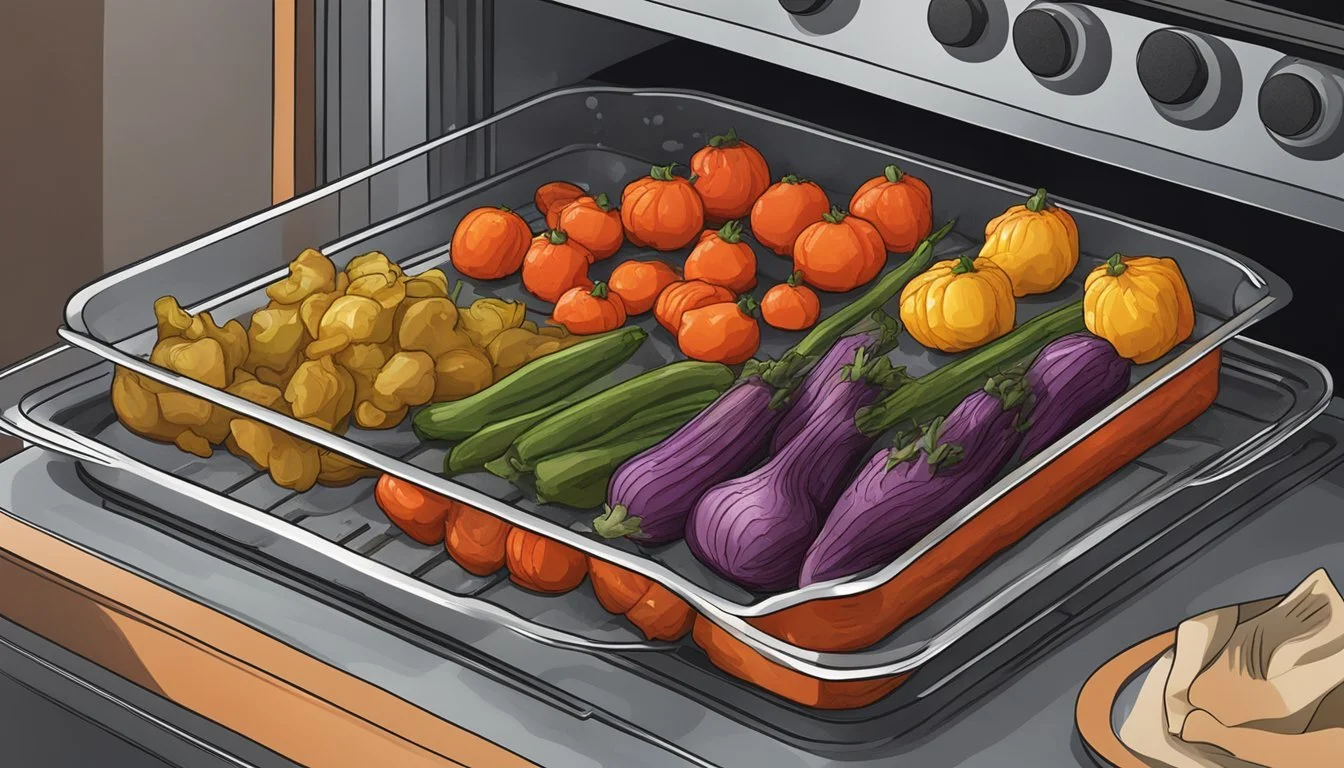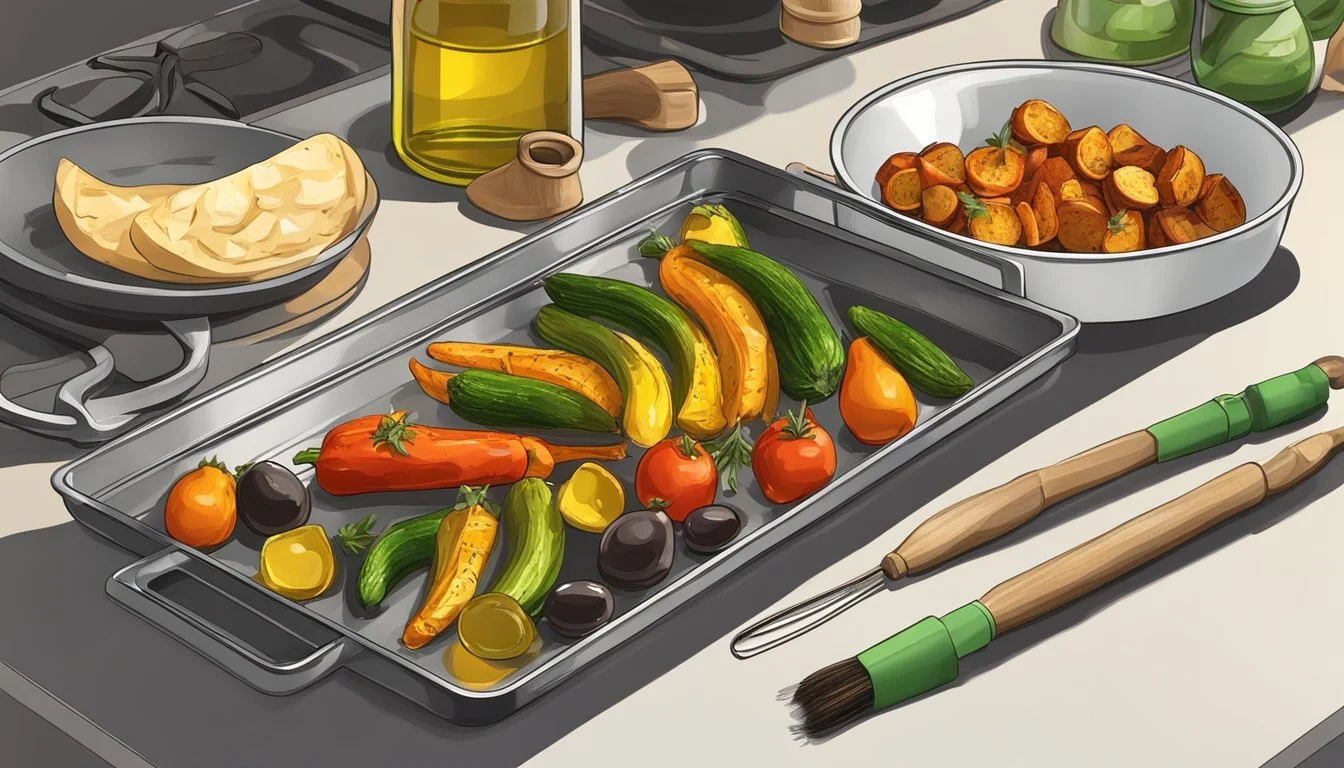Best Way to Reheat Harissa Roasted Vegetables
Maintaining Spice and Freshness
Harissa roasted vegetables bring a vibrant kick to any meal, melding the earthy depth of roasted vegetables with the fiery zest of harissa spice. To maintain the integrity of their spicy flavor and avoid sogginess, reheating these veggies requires a method that not only warms them through but also revives their textural appeal. The key is to find a balance that heats the vegetables sufficiently without compromising their crisp exterior and moist interior.
Oven reheating stands out as the optimal method for such a task. It's a gentle yet effective way to ensure the vegetables are heated evenly, allowing the spices to become aromatic once more without burning them. When dealing with already roasted and seasoned vegetables such as those flavored with harissa, a touch of oil can assist in bringing back the desirable crispness, making the once-lively dish just as enticing the second time around.
Understanding Harissa Roasted Vegetables
Roasted vegetables seasoned with harissa offer a flavorful and nutritious meal option. Harissa, a spicy and aromatic paste made from chili peppers, spices, and herbs, pairs particularly well with the natural sweetness of roasted vegetables like carrots, sweet potatoes, and squash.
Nutritional Profile of Harissa and Vegetables
Harissa brings more than just heat to the table; it contributes a range of vitamins and antioxidants due to its chili pepper base and added spices. However, its nutritional value can vary based on the ingredients used in its preparation. Common components like garlic and spices such as cumin and coriander are known for their health benefits.
Vegetables, the main component of the dish, offer a high fiber content and a rich source of essential nutrients. Here's a snapshot of key nutritional elements found in commonly roasted vegetables:
Carrots: Excellent source of beta-carotene, vitamin K1, and potassium.
Broccoli: High in vitamins C and K, and provides fiber and folate.
Cauliflower: Offers vitamins C and K, and is high in fiber.
Zucchini: Loaded with vitamins A, C, and manganese.
Sweet Potato: Rich in beta-carotene, vitamins A and C, and fiber.
Squash: Contains vitamin A, and a good amount of vitamin C.
Potatoes: High in vitamin C, vitamin B6, and potassium.
Root Vegetables: Typically high in fiber and vitamin C.
The Importance of Proper Storage
To preserve both their nutritional value and their bold flavors, storing harissa roasted vegetables properly is crucial. Leftover vegetables should be cooled to room temperature quickly to prevent bacterial growth. They should be stored in air-tight containers to maintain freshness and prevent the absorption of unwanted flavors from the refrigerator. Consuming leftover roasted vegetables within 2-3 days is recommended to ensure nutritional integrity and optimal taste.
Preparatory Steps Before Reheating
Proper preliminary measures ensure that harissa roasted vegetables retain their texture and spicy flavors when reheated. These steps mitigate safety risks and preserve the vegetables' quality.
Assessing Vegetable Conditions
Before reheating, one should inspect the vegetables for any signs of spoilage such as mold or an off-putting smell. Vegetables that exhibit spoilage must be discarded to prevent any risk of foodborne illness. Ensure that the vegetables' texture is suitable for reheating—ideal conditions include a firmness to the bite and no excess moisture that could result in sogginess.
Safe Handling and Storing Techniques
For optimal safety and quality, vegetables should be stored in an airtight container or wrapped securely in aluminum foil or parchment paper to prevent exposure to air and moisture, which can facilitate bacterial growth and cause mold. Refrigerate the vegetables within two hours of cooking to maintain safety, as room-temperature storage promotes bacteria proliferation.
In Fridge: Store the vegetables for up to 3 days to maintain taste and texture.
In Freezer: If freezing, do so within several hours of cooking. Use airtight containers or freezer-safe bags, and consume them within 6 months to mitigate freezer burn.
Always thaw frozen vegetables in the fridge to keep them out of the temperature range in which bacteria rapidly multiply. Avoid repeated freezing and thawing cycles, as this affects texture and may increase the risk of bacterial growth.
Reheating Techniques
The key to successfully reheating harissa roasted vegetables lies in preserving their texture and spicy flavors. Careful choice of method can ensure that these vegetables remain as enjoyable as when they were first cooked.
Using the Oven for Optimal Texture
The oven is widely regarded as the best option for reheating harissa roasted vegetables. By using the oven, one maintains the crispy texture that is often lost with other reheating methods.
Preheat the oven to 350 degrees Fahrenheit.
For even heat distribution, spread the vegetables out on a large baking sheet lined with parchment paper or foil.
Reheat for about 10-15 minutes, depending on the size of the vegetables.
Check regularly to avoid overcooking, which can lead to dryness.
Stovetop Reheating Methods
Stovetop reheating can provide a quick and effective solution while maintaining a desirable texture.
Use a cast-iron skillet for best results, as it retains heat well and can simulate the effect of an oven.
A small amount of oil may be added to the skillet to prevent sticking and to help restore the crispy texture of the vegetables.
Cook over medium heat, stirring occasionally, until the vegetables are heated through, which typically takes about 5-7 minutes.
Alternative Methods: Microwave and Air Fryer
While oven and stovetop are preferred, the microwave and air fryer can be used when time is a constraint.
Microwave: Place vegetables in a microwave-safe dish and cover with a damp paper towel. Heat in 30-second intervals, checking for warmness and moisture retention.
Air Fryer: Preheat the air fryer to 375 degrees Fahrenheit. Cook in a single layer for 3-4 minutes, maintaining their texture without significant moisture loss.
By selecting the appropriate reheating method, the robust flavors and satisfying crunch of harissa roasted vegetables can be thoroughly enjoyed, whether it's just after meal prep or as a part of a meal later on.
Enhancing Flavor after Reheating
When reheating harissa roasted vegetables, the goal is not only to retain their texture and warmth, but also to preserve and enhance the spicy, smoky notes distinctive to harissa. One can employ herbs and spices as well as sauces and toppings to elevate the flavor profile after reheating.
Herbs and Spices for Additional Flavor
After reheating harissa roasted vegetables, a chef might find the flavor subdued. Hence, it is a good practice to refresh the seasoning to compensate for any loss of flavor. A sprinkle of salt and pepper can reinvigorate the vegetables, while a light dusting of cumin or garlic powder can reintroduce warmth and depth. For added freshness, one can consider:
Chopped cilantro for a zesty lift
A squeeze of lemon juice for citrusy brightness
Introducing fresh herbs towards the end of reheating guarantees their potency and provides a contrast to the smoky dimensions of the harissa.
Utilizing Sauces and Toppings
To further enhance the reheated vegetables, a drizzle of olive oil can return the glossy sheen and richness to the dish. Enthusiasts of intense flavors may also stir a teaspoon of harissa paste into tahini, creating a sauce that complements the roasted vegetables with its creamy and spicy character. Here are some additional toppings that work well:
Honey: for a hint of sweetness to balance the spiciness
Garlic: freshly minced or lightly sautéed for a pungent kick
Lemon zest: for a tangy, fragrant finish
Using these toppings with judiciousness ensures the dish maintains a rich harmony of flavors typical of harissa roasted vegetables.
Serving Suggestions and Pairings
When reheated correctly, harissa roasted vegetables offer bold flavors that can complement a variety of dishes. Pairing them strategically enhances both the vegetables and the accompanying meal elements.
Vegetable Side Dishes
One can elevate a meal by adding vegetarian side dishes that can absorb and complement the spicy harissa flavors. Here are a few suggestions:
Couscous (What wine goes well with couscous?) or Quinoa Salad: These grain salads can balance the heat with their neutral tones.
Gouda Mashed Potatoes: The creamy texture and mild, sweet taste of gouda cheese works well with the spicy profile of the vegetables.
Protein Combinations for a Complete Meal
For a complete meal, incorporating a protein source that goes well with the zesty harissa roasted vegetables is key. Consider the following combinations:
Fish: A mild white fish like cod or tilapia can be a subtle backdrop to the bold flavors of the vegetables.
Chicken: Grilled or baked chicken can be seasoned minimally to let the harissa spices stand out.
Chickpeas: For a hearty vegetarian option, adding chickpeas provides both protein and a creamy contrast.
Remember, the key to a great pairing is balance. One should aim to choose dishes that not only stand up to the flavors but also complement the warm, spicy notes of harissa roasted vegetables.
Preservation Strategies Post-Reheating
In the aftermath of reheating harissa roasted vegetables, the focus shifts to keeping leftovers safe and preserving their spicy flavor. Maintaining safety and flavor integrity requires specific storage techniques and understanding the correct freezing and thawing procedures.
Handling Leftovers Safely
One must store leftovers properly to maintain safety and quality. Reheated roasted vegetables are best kept in an airtight container to prevent moisture loss and the proliferation of bacteria. The container should then be placed in the refrigerator. Harissa roasted vegetables should be consumed within 3 to 4 days to ensure their flavor and safety. When it is time to reheat them again, they should be heated to an internal temperature of 165°F to ensure safety.
Freezing and Thawing Procedures
For longer storage, freezing is the best option. Harissa roasted vegetables can be stored in freezer bags or containers that are suitable for freezer use. To maintain their integrity, one should follow these steps:
Cool the vegetables completely before freezing. Heat can cause condensation, which leads to freezer burn.
Portion the vegetables into meal-sized quantities, which will make thawing easier.
Wrap the vegetables in foil or use freezer bags to prevent air exposure. Expel as much air as possible before sealing.
Label the containers or bags with the date to ensure they are used within a preferable timeframe, ideally within 6 months.
When thawing, one should transfer the vegetables to the refrigerator to allow for a slow and safe thaw. For quicker thawing, one can use a microwave, but ensure that they are reheated properly to avoid uneven heating and potential food safety issues. It is crucial to avoid refreezing previously thawed vegetables, as this can significantly degrade their texture and flavor.
Tips for Meal Prep and Quick Meals
When preparing a recipe like harissa roasted vegetables, meal preppers understand the value of both flavor and efficiency. Here are several tips to keep meals quick and tasteful, whether served fresh or as leftovers:
Advance Preparation: Meal prep involves cooking meals ahead of time. For harissa roasted vegetables, one can chop veggies in bulk and store them in the fridge, ready to toss with oil and seasonings before roasting.
Spice Blends: Maintain the vibrancy of harissa's flavors by pre-mixing the spice blend. This ensures a quick and even seasoning process when you're ready to cook.
Reheating: Preserve the dish’s spicy profile when reheating. Use a skillet over medium heat with a bit of oil to restore the crispy texture without diminishing flavor. A reheating time of about 5 minutes should suffice.
Portion Sizes: Divide the vegetables into single-serving containers after cooking. This makes for easy reheating and helps in managing portions.
Storing Leftovers: To retain their best quality, store roasted vegetables in airtight containers. Proper storage prevents moisture loss and flavor degradation.
Microwave Use: If using a microwave, cover the vegetables and reheat them on a lower power setting. This gentler reheating method protects the texture and taste.
The right techniques in meal prep and reheating are crucial for those who want to savor their dishes with minimal loss of flavor or texture. With these tips, chefs can ensure quick, delicious meals even on a hectic schedule.
Troubleshooting Common Issues
When reheating harissa roasted vegetables, one may encounter issues like moisture loss and sogginess. To ensure the vegetables remain vibrant in color and texture, it's crucial to employ effective reheating techniques tailored to addressing these concerns.
Dealing with Moisture Loss
Vegetables naturally contain water, and reheating can cause them to release moisture, leading to a disappointing loss of crispness. To combat this:
Before Reheating: Pat the vegetables dry with paper towels gently to absorb any excess moisture. This step is important for maintaining the integrity of the harissa coating.
During Reheating: Use a preheated oven and arrange the vegetables on a sheet pan in a single layer, allowing space between them for air circulation. This method helps to evaporate moisture evenly and preserve the vegetables' crispness.
Preventing Sogginess and Ensuring Crispness
Sogginess detracts from the appeal of reheated roasted vegetables. To achieve a crispy outcome, the following tactics are recommended:
Oven Temperature: Heat the oven to a high temperature, typically around 400ºF, which quickly surfaces the dehydration process leading to crispiness rather than sogginess.
Baking Time: Monitor closely, as vegetables may reheat unevenly. Shake the sheet pan or stir the vegetables halfway through to ensure even heat distribution.
By adhering to these steps, the vegetables should retain their spicy harissa flavor, appealing color, and desirable crispy texture.
Health and Safety Considerations
When reheating harissa roasted vegetables, it's critical to ensure both flavor preservation and food safety. The following subsections outline specific measures to avoid bacterial growth and recognize spoilage signs, ensuring the safety and health of those consuming the reheated vegetables.
Avoiding Bacterial Growth
To prevent bacteria from thriving on reheated harissa roasted vegetables, they should be stored at a safe temperature. The "danger zone" where bacteria grow most rapidly is between 40°F and 140°F (4°C and 60°C).
Key practices include:
Cooling: Quickly cool vegetables before refrigeration.
Refrigeration: Store them below 40°F (4°C).
Reheating: Heat to a minimum internal temperature of 165°F (74°C).
Recognizing Spoilage Signs
Spoilage in food signals a hazard to one's health. Harissa roasted vegetables may provide substrates for mold and bacteria, which are common contaminants associated with spoilage.
Signs of spoilage can include:
Visual: Mold growth or color changes.
Olfactory: Off or sour smells.
Texture: Sliminess or unexpected softness.
Any vegetables displaying these signs should be discarded, as consuming spoiled food can result in illness.

